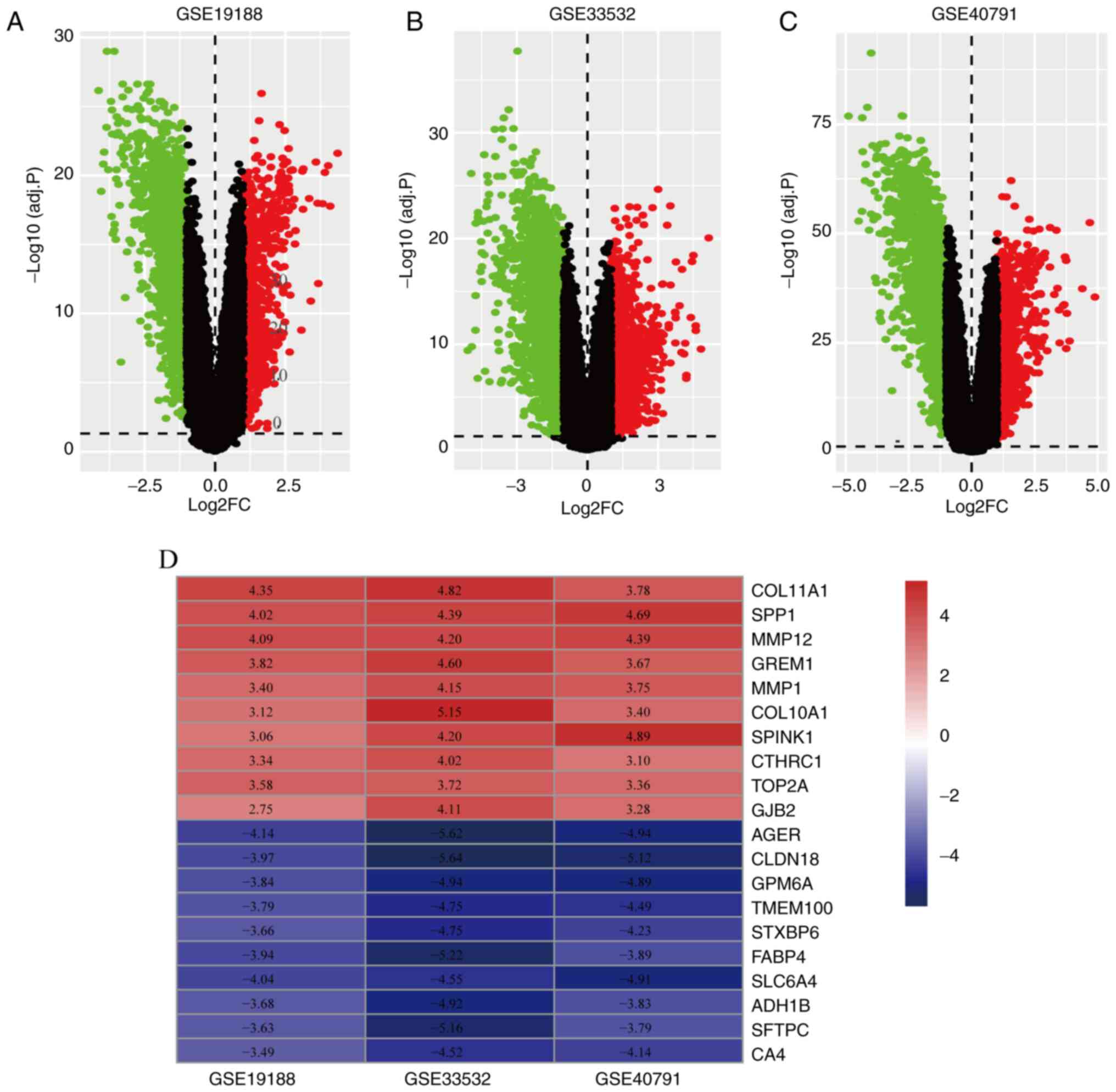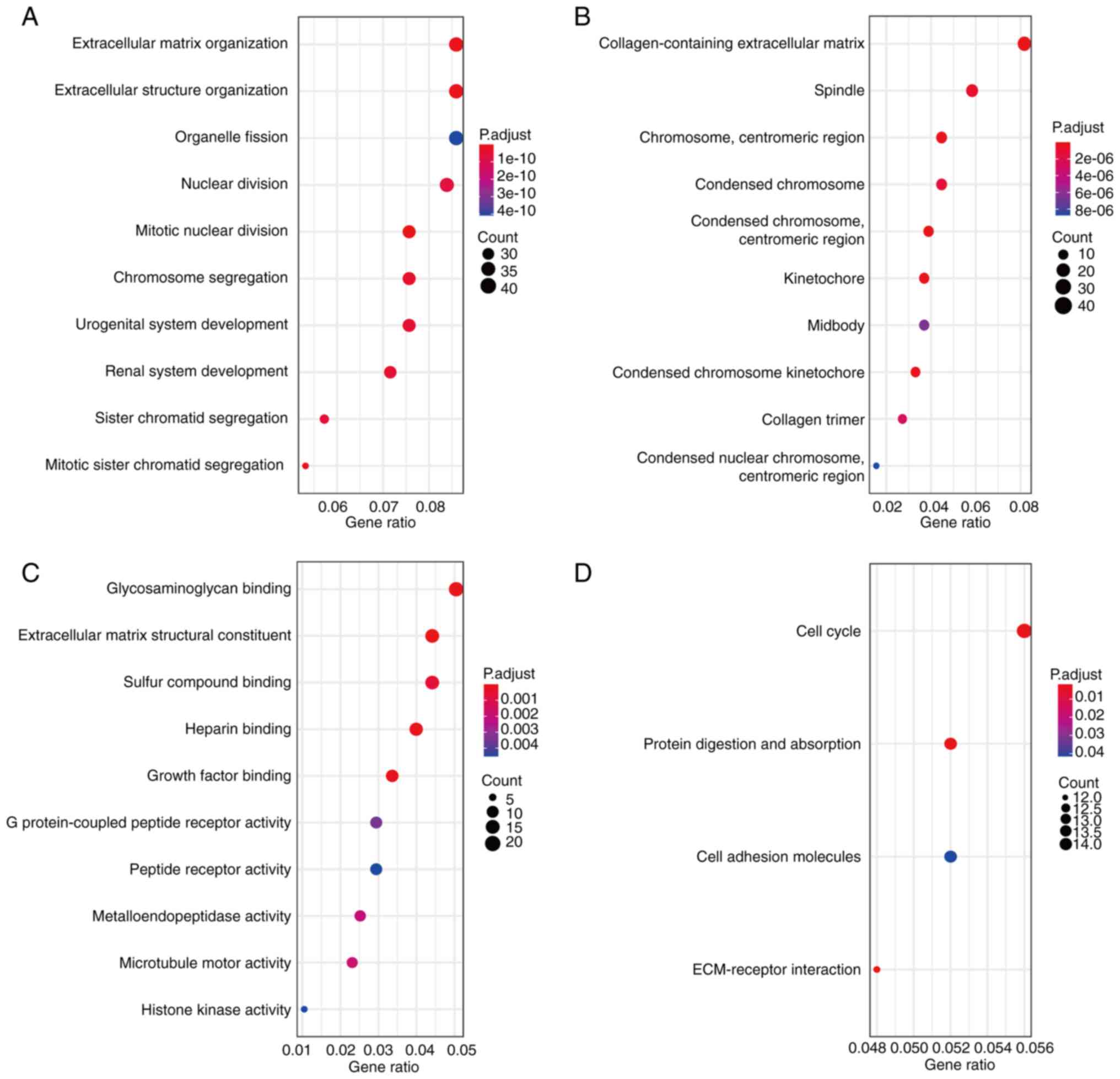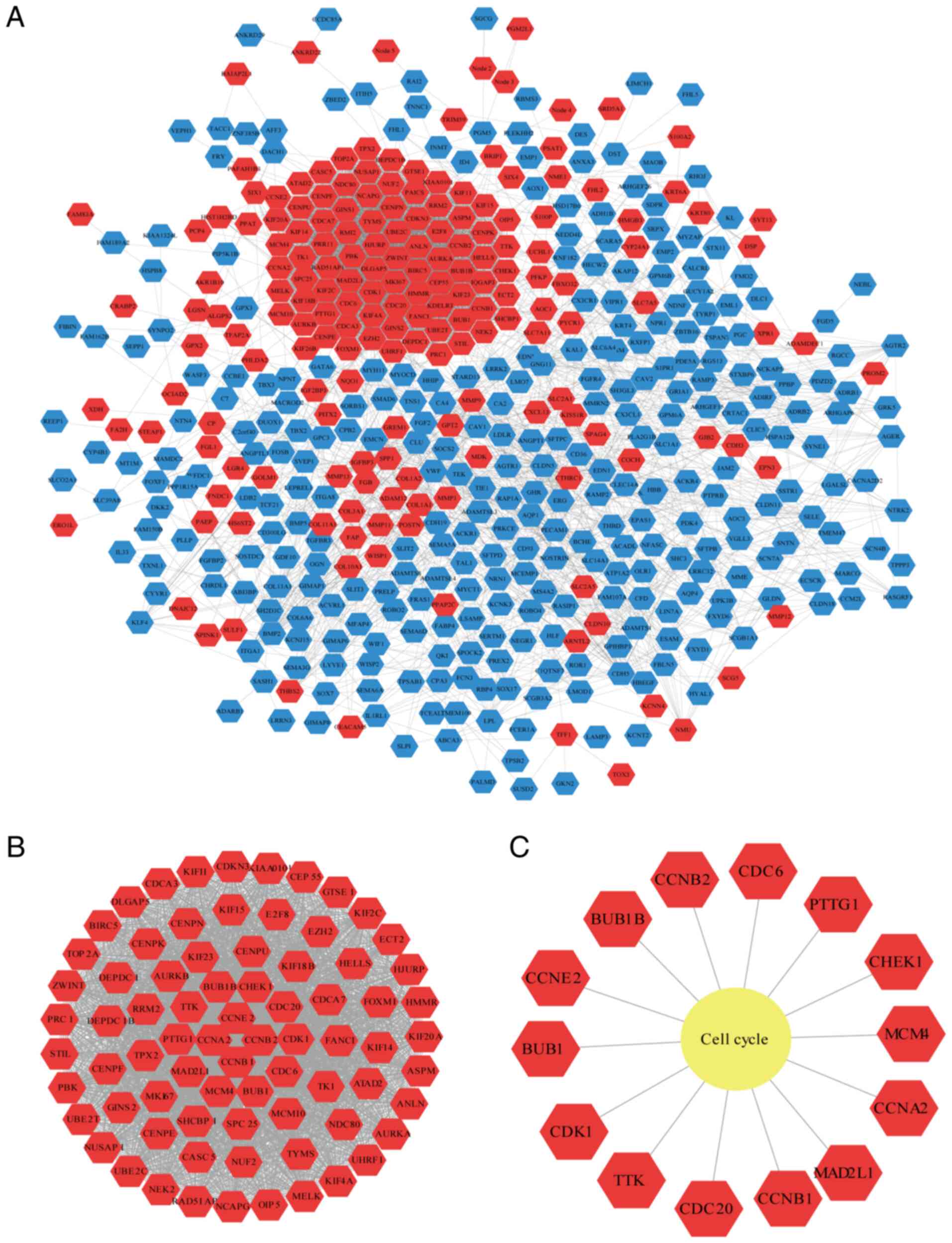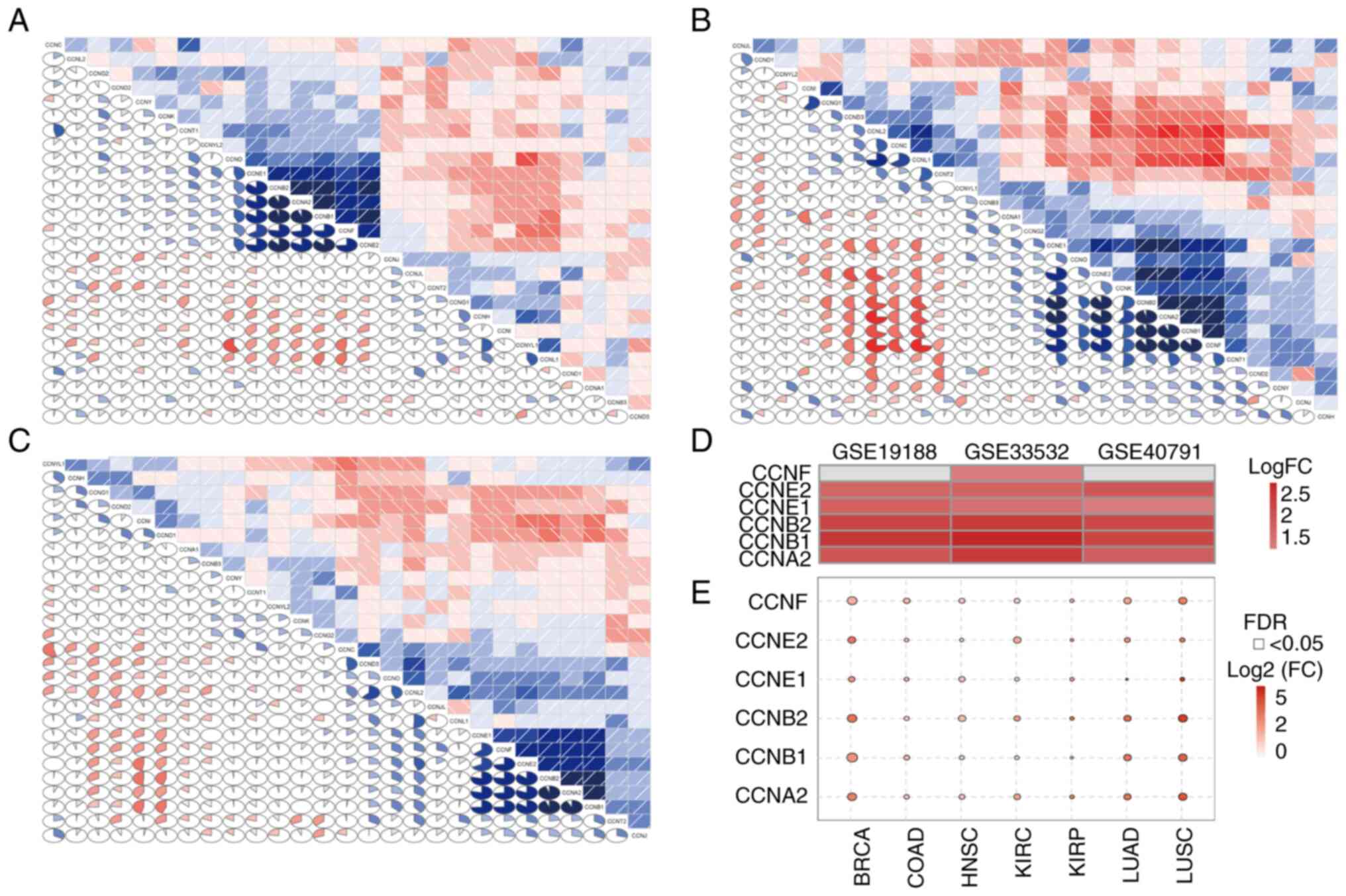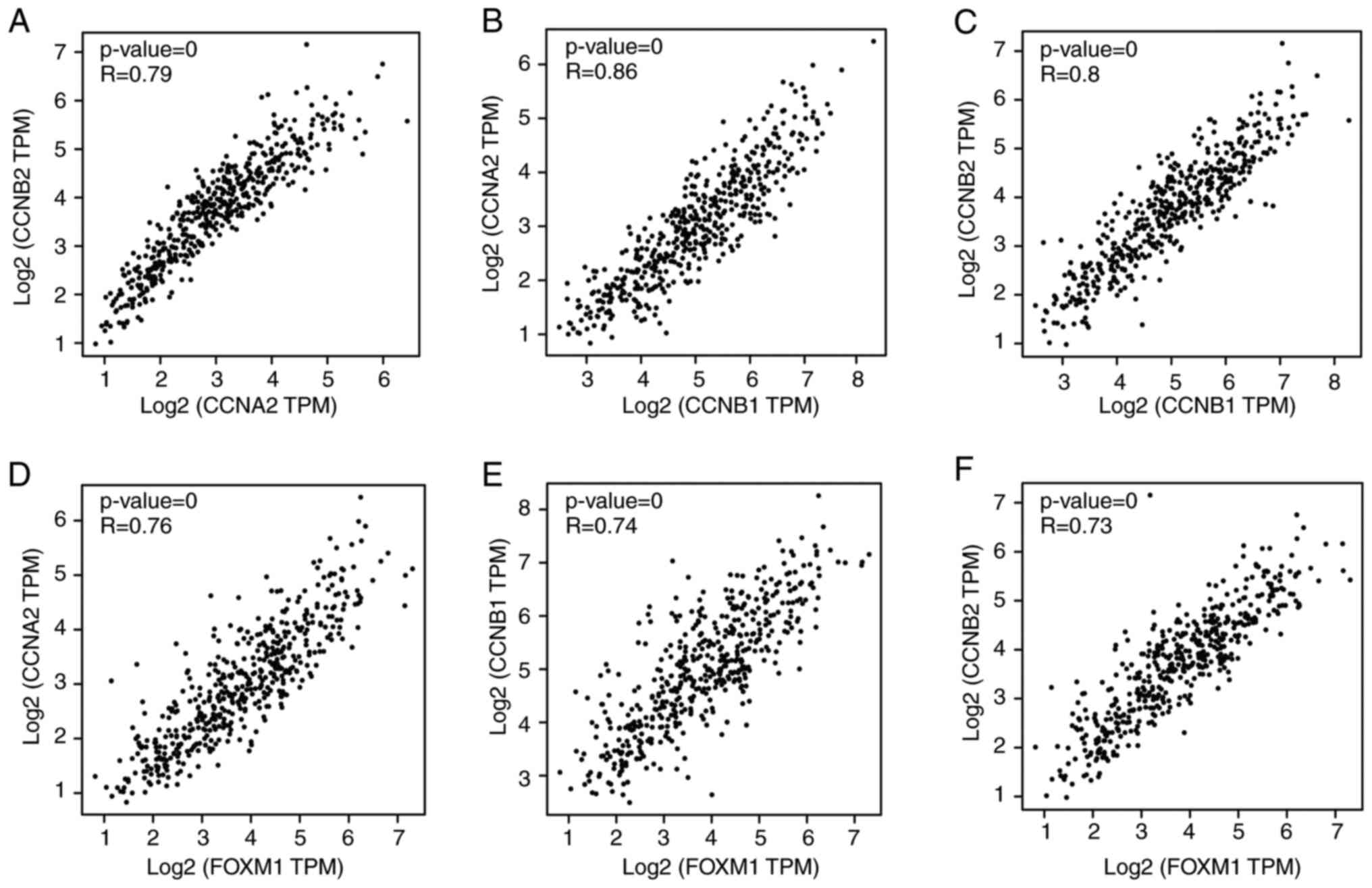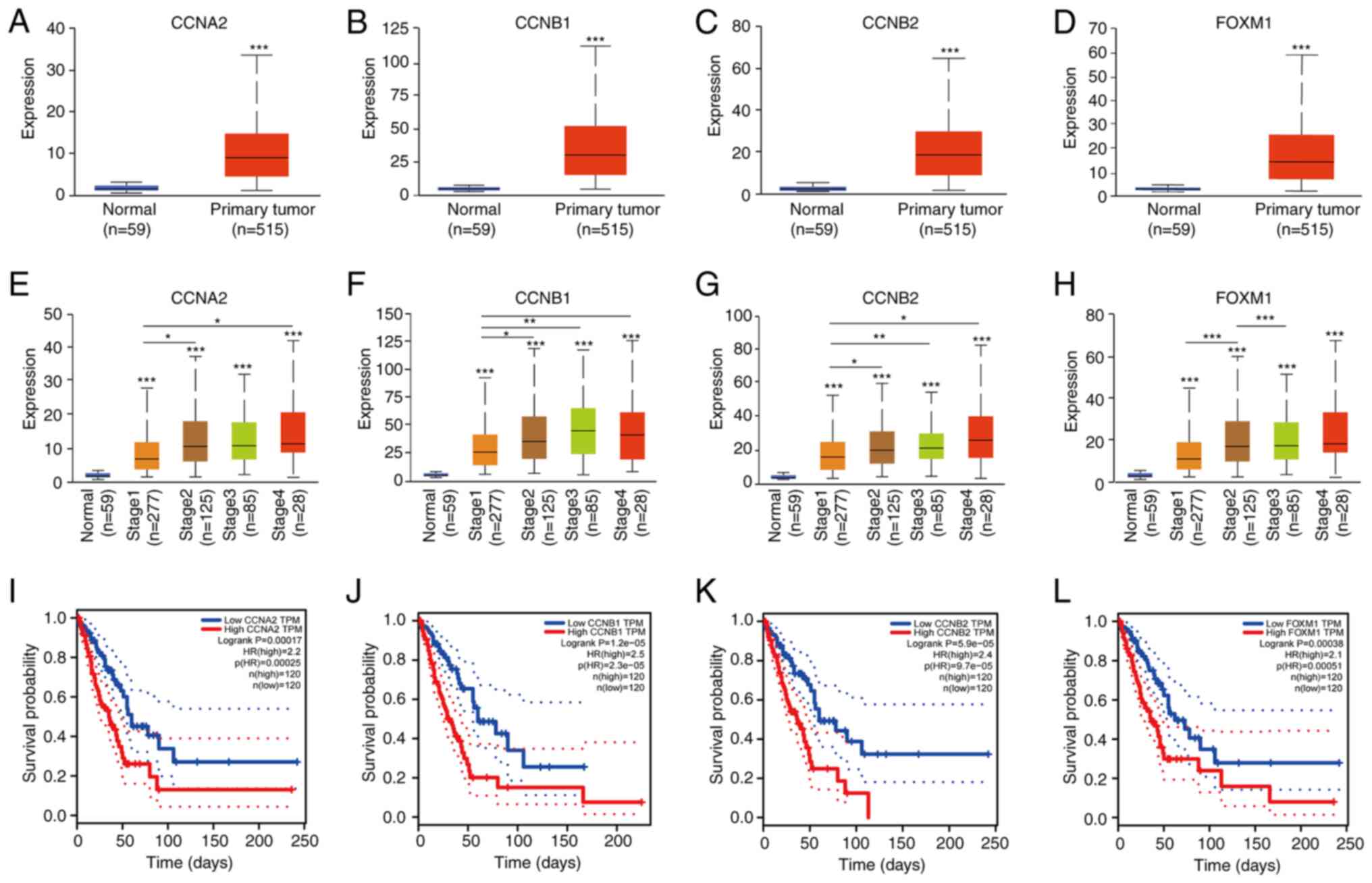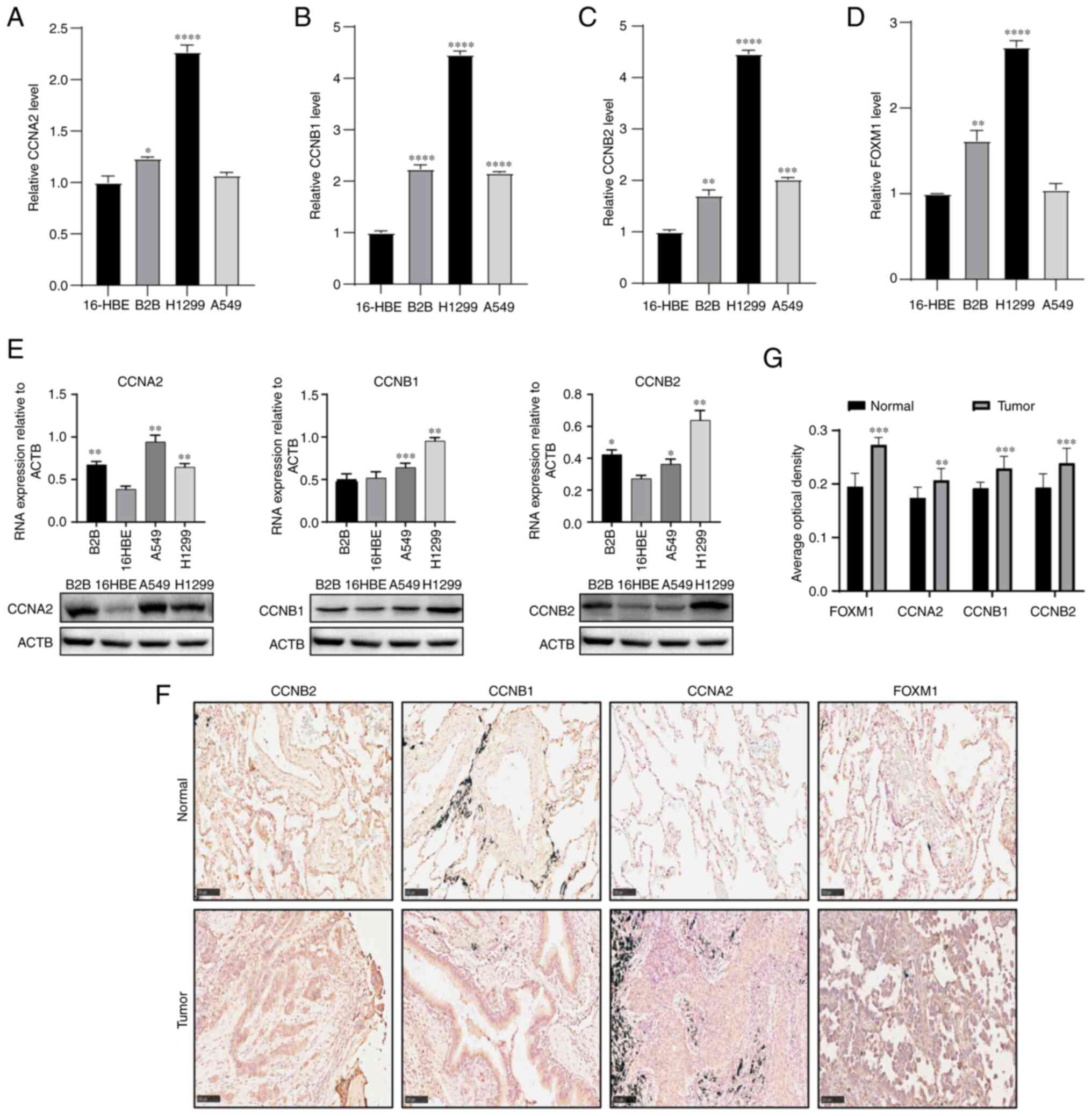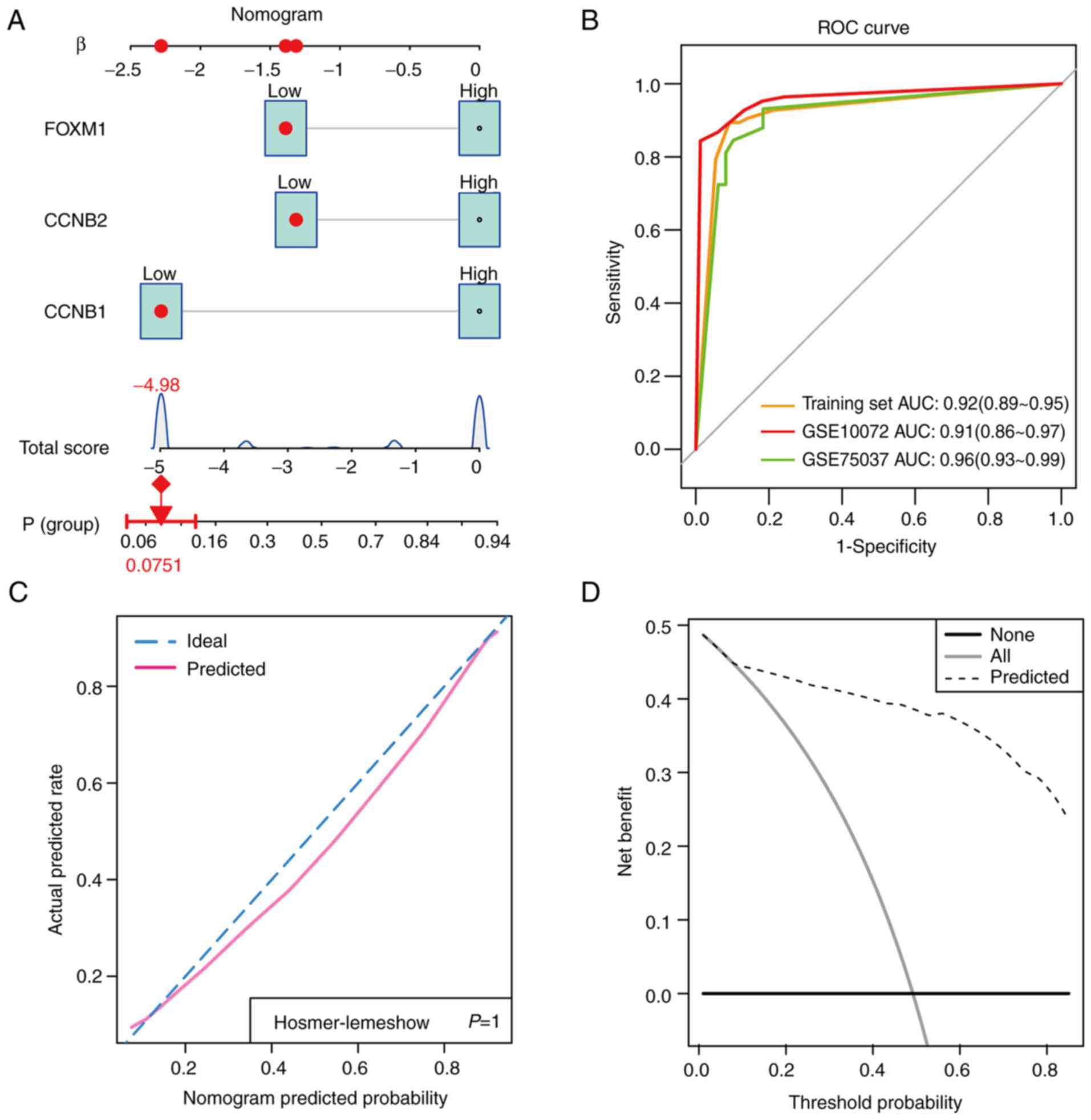|
1
|
Torre LA, Siegel RL and Jemal A: Lung
cancer statistics. Adv Exp Med Biol. 893:1–19. 2016.PubMed/NCBI View Article : Google Scholar
|
|
2
|
Boolell V, Alamgeer M, Watkins DN and
Ganju V: The evolution of therapies in non-small cell lung cancer.
Cancers (Basel). 7:1815–1846. 2015.PubMed/NCBI View Article : Google Scholar
|
|
3
|
Zenke Y, Tsuboi M, Chiba Y, Tsujino K,
Satouchi M, Sawa K, Shimizu J, Daga H, Fujimoto D, Mori M, et al:
Effect of second-generation vs third-generation chemotherapy
regimens with thoracic radiotherapy on unresectable stage III
non-small-cell lung cancer: 10-year follow-up of a WJTOG0105 phase
3 randomized clinical trial. JAMA Oncol. 7:904–909. 2021.PubMed/NCBI View Article : Google Scholar
|
|
4
|
Min HY and Lee HY: Mechanisms of
resistance to chemotherapy in non-small cell lung cancer. Arch
Pharm Res. 44:146–164. 2021.PubMed/NCBI View Article : Google Scholar
|
|
5
|
Lu X, Zhou D, Hou B, Liu QX, Chen Q, Deng
XF, Yu ZB, Dai JG and Zheng H: Dichloroacetate enhances the
antitumor efficacy of chemotherapeutic agents via inhibiting
autophagy in non-small-cell lung cancer. Cancer Manag Res.
10:1231–1241. 2018.PubMed/NCBI View Article : Google Scholar
|
|
6
|
Zhang Z, Zhang C, Yang Z, Zhang G, Wu P,
Luo Y, Zeng Q, Wang L, Xue Q, Zhang Y, et al: m6A regulators as
predictive biomarkers for chemotherapy benefit and potential
therapeutic targets for overcoming chemotherapy resistance in
small-cell lung cancer. J Hematol Oncol. 14(190)2021.PubMed/NCBI View Article : Google Scholar
|
|
7
|
Pang Z, Chen X, Wang Y, Wang Y, Yan T, Wan
J and Du J: Comprehensive analyses of the heterogeneity and
prognostic significance of tumor-infiltrating immune cells in
non-small-cell lung cancer: Development and validation of an
individualized prognostic model. Int Immunopharmacol.
86(106744)2020.PubMed/NCBI View Article : Google Scholar
|
|
8
|
Riess JW, Gandara DR, Frampton GM, Madison
R, Peled N, Bufill JA, Dy GK, Ou SI, Stephens PJ, McPherson JD, et
al: Diverse EGFR exon 20 insertions and co-occurring molecular
alterations identified by comprehensive genomic profiling of NSCLC.
J Thorac Oncol. 13:1560–1568. 2018.PubMed/NCBI View Article : Google Scholar
|
|
9
|
Zhang F, Wang J, Ma M, Xu Y, Lu X and Wei
S: Genomic alteration profiles of lung cancer and their
relationship to clinical features and prognosis value using
individualized genetic testing. J Thorac Dis. 13:5007–5015.
2021.PubMed/NCBI View Article : Google Scholar
|
|
10
|
Jirawatnotai S, Dalton S and
Wattanapanitch M: Role of cyclins and cyclin-dependent kinases in
pluripotent stem cells and their potential as a therapeutic target.
Semin Cell Dev Biol. 107:63–71. 2020.PubMed/NCBI View Article : Google Scholar
|
|
11
|
Gong K, Zhou H, Liu H, Xie T, Luo Y, Guo
H, Chen J, Tan Z, Yang Y and Xie L: Identification and integrate
analysis of key biomarkers for diagnosis and prognosis of non-small
cell lung cancer based on bioinformatics analysis. Technol Cancer
Res Treat. 20(15330338211060202)2021.PubMed/NCBI View Article : Google Scholar
|
|
12
|
Thoma OM, Neurath MF and Waldner MJ:
Cyclin-dependent kinase inhibitors and their therapeutic potential
in colorectal cancer treatment. Front Pharmacol.
12(757120)2021.PubMed/NCBI View Article : Google Scholar
|
|
13
|
Susanti NMP and Tjahjono DH:
Cyclin-dependent kinase 4 and 6 inhibitors in cell cycle
dysregulation for breast cancer treatment. Molecules.
26(4462)2021.PubMed/NCBI View Article : Google Scholar
|
|
14
|
Hou J, Aerts J, den Hamer B, van Ijcken W,
den Bakker M, Riegman P, van der Leest C, van der Spek P, Foekens
JA, Hoogsteden HC, et al: Gene expression-based classification of
non-small cell lung carcinomas and survival prediction. PLoS One.
5(e10312)2010.PubMed/NCBI View Article : Google Scholar
|
|
15
|
Quek K, Li J, Estecio M, Zhang J, Fujimoto
J, Roarty E, Little L, Chow CW, Song X, Behrens C, et al: DNA
methylation intratumor heterogeneity in localized lung
adenocarcinomas. Oncotarget. 8:21994–22002. 2017.PubMed/NCBI View Article : Google Scholar
|
|
16
|
Zhang Y, Foreman O, Wigle DA, Kosari F,
Vasmatzis G, Salisbury JL, van Deursen J and Galardy PJ: USP44
regulates centrosome positioning to prevent aneuploidy and suppress
tumorigenesis. J Clin Invest. 122:4362–4374. 2012.PubMed/NCBI View Article : Google Scholar
|
|
17
|
Gautier L, Cope L, Bolstad BM and Irizarry
RA: Affy-analysis of Affymetrix GeneChip data at the probe level.
Bioinformatics. 20:307–315. 2004.PubMed/NCBI View Article : Google Scholar
|
|
18
|
Ritchie ME, Phipson B, Wu D, Hu Y, Law CW,
Shi W and Smyth GK: limma powers differential expression analyses
for RNA-sequencing and microarray studies. Nucleic Acids Res.
43(e47)2015.PubMed/NCBI View Article : Google Scholar
|
|
19
|
Kolde R, Laur S, Adler P and Vilo J:
Robust rank aggregation for gene list integration and
meta-analysis. Bioinformatics. 28:573–580. 2012.PubMed/NCBI View Article : Google Scholar
|
|
20
|
Yan S, Wang W, Gao G, Cheng M, Wang X,
Wang Z, Ma X, Chai C and Xu D: Key genes and functional
coexpression modules involved in the pathogenesis of systemic lupus
erythematosus. J Cell Physiol. 233:8815–8825. 2018.PubMed/NCBI View Article : Google Scholar
|
|
21
|
Sherman BT, Hao M, Qiu J, Jiao X, Baseler
MW, Lane HC, Imamichi T and Chang W: DAVID: A web server for
functional enrichment analysis and functional annotation of gene
lists (2021 update). Nucleic Acids Res. 50 (W1):W216–W221.
2022.PubMed/NCBI View Article : Google Scholar : (Epub ahead of
print).
|
|
22
|
Yu G, Wang LG, Han Y and He QY:
clusterProfiler: An R package for comparing biological themes among
gene clusters. OMICS. 16:284–287. 2012.PubMed/NCBI View Article : Google Scholar
|
|
23
|
Szklarczyk D, Morris JH, Cook H, Kuhn M,
Wyder S, Simonovic M, Santos A, Doncheva NT, Roth A, Bork P, et al:
The STRING database in 2017: Quality-controlled protein-protein
association networks, made broadly accessible. Nucleic Acids Res.
45 (D1):D362–D368. 2017.PubMed/NCBI View Article : Google Scholar
|
|
24
|
Shannon P, Markiel A, Ozier O, Baliga NS,
Wang JT, Ramage D, Amin N, Schwikowski B and Ideker T: Cytoscape: A
software environment for integrated models of biomolecular
interaction networks. Genome Res. 13:2498–2504. 2003.PubMed/NCBI View Article : Google Scholar
|
|
25
|
Bader GD and Hogue CW: An automated method
for finding molecular complexes in large protein interaction
networks. BMC Bioinformatics. 4(2)2003.PubMed/NCBI View Article : Google Scholar
|
|
26
|
Assenov Y, Ramírez F, Schelhorn SE,
Lengauer T and Albrecht M: Computing topological parameters of
biological networks. Bioinformatics. 24:282–284. 2008.PubMed/NCBI View Article : Google Scholar
|
|
27
|
Tang Z, Li C, Kang B, Gao G, Li C and
Zhang Z: GEPIA: A web server for cancer and normal gene expression
profiling and interactive analyses. Nucleic Acids Res. 45
(W1):W98–W102. 2017.PubMed/NCBI View Article : Google Scholar
|
|
28
|
Rouillard AD, Gundersen GW, Fernandez NF,
Wang Z, Monteiro CD, McDermott MG and Ma'ayan A: The harmonizome: A
collection of processed datasets gathered to serve and mine
knowledge about genes and proteins. Database (Oxford).
2016(baw100)2016.PubMed/NCBI View Article : Google Scholar
|
|
29
|
Chandrashekar DS, Bashel B, Balasubramanya
SAH, Creighton CJ, Ponce-Rodriguez I, Chakravarthi BVSK and
Varambally S: UALCAN: A Portal for facilitating tumor subgroup gene
expression and survival analyses. Neoplasia. 19:649–658.
2017.PubMed/NCBI View Article : Google Scholar
|
|
30
|
Livak KJ and Schmittgen TD: Analysis of
relative gene expression data using real-time quantitative PCR and
the 2(-Delta Delta C(T)) method. Methods. 25:402–408.
2001.PubMed/NCBI View Article : Google Scholar
|
|
31
|
Landi MT, Dracheva T, Rotunno M, Figueroa
JD, Liu H, Dasgupta A, Mann FE, Fukuoka J, Hames M, Bergen AW, et
al: Gene expression signature of cigarette smoking and its role in
lung adenocarcinoma development and survival. PLoS One.
3(e1651)2008.PubMed/NCBI View Article : Google Scholar
|
|
32
|
Girard L, Rodriguez-Canales J, Behrens C,
Thompson DM, Botros IW, Tang H, Xie Y, Rekhtman N, Travis WD,
Wistuba II, et al: An expression signature as an aid to the
histologic classification of non-small cell lung cancer. Clin
Cancer Res. 22:4880–4889. 2016.PubMed/NCBI View Article : Google Scholar
|
|
33
|
Venables WN and Ripley BD: Modern applied
statistics with S. 4th edition. Statistics and Computing, 2002.
|
|
34
|
Dobson AJ: An introduction to generalized
linear models, second edition. Chapman & Hall/crc, 2001.
|
|
35
|
Harrell FE Jr: Regression modeling
strategies: With applications to linear models, logistic
regression, and survival analysis. Springer, 2010.
|
|
36
|
Robin X, Turck N, Hainard A, Tiberti N,
Lisacek F, Sanchez JC and Müller M: pROC: An open-source package
for R and S+ to analyze and compare ROC curves. BMC Bioinformatics.
12(77)2011.PubMed/NCBI View Article : Google Scholar
|
|
37
|
Eichhorn JM, Kothari A and Chambers TC:
Cyclin B1 overexpression induces cell death independent of mitotic
arrest. PLoS One. 9(e113283)2014.PubMed/NCBI View Article : Google Scholar
|
|
38
|
Gavet O and Pines J: Progressive
activation of CyclinB1-Cdk1 coordinates entry to mitosis. Dev Cell.
18:533–543. 2010.PubMed/NCBI View Article : Google Scholar
|
|
39
|
Chang CC, Hung CM, Yang YR, Lee MJ and Hsu
YC: Sulforaphane induced cell cycle arrest in the G2/M phase via
the blockade of cyclin B1/CDC2 in human ovarian cancer cells. J
Ovarian Res. 6(41)2013.PubMed/NCBI View Article : Google Scholar
|
|
40
|
Chu R, Terrano DC and Chambers TC:
Cdk1/cyclin B plays a key role in mitotic arrest-induced apoptosis
by phosphorylation of Mcl-1, promoting its degradation and freeing
Bak from sequestration. Biochem Pharmacol. 83:199–206.
2012.PubMed/NCBI View Article : Google Scholar
|
|
41
|
Ye C, Wang J, Wu P, Li X and Chai Y:
Prognostic role of cyclin B1 in solid tumors: A meta-analysis.
Oncotarget. 8:2224–2232. 2017.PubMed/NCBI View Article : Google Scholar
|
|
42
|
Zhao P, Zhang P, Hu W, Wang H, Yu G, Wang
Z, Li C, Bai J and Zhang Y: Upregulation of cyclin B1 plays
potential roles in the invasiveness of pituitary adenomas. J Clin
Neurosci. 43:267–273. 2017.PubMed/NCBI View Article : Google Scholar
|
|
43
|
Chen EB, Qin X, Peng K, Li Q, Tang C, Wei
YC, Yu S, Gan L and Liu TS: HnRNPR-CCNB1/CENPF axis contributes to
gastric cancer proliferation and metastasis. Aging (Albany NY).
11:7473–4791. 2019.PubMed/NCBI View Article : Google Scholar
|
|
44
|
Zhang H, Zhang X, Li X, Meng WB, Bai ZT,
Rui SZ, Wang ZF, Zhou WC and Jin XD: Effect of CCNB1 silencing on
cell cycle, senescence, and apoptosis through the p53 signaling
pathway in pancreatic cancer. J Cell Physiol. 234:619–631.
2018.PubMed/NCBI View Article : Google Scholar
|
|
45
|
Sarafan-Vasseur N, Lamy A, Bourguignon J,
Le Pessot F, Hieter P, Sesboüé R, Bastard C, Frébourg T and Flaman
JM: Overexpression of B-type cyclins alters chromosomal
segregation. Oncogene. 21:2051–2057. 2002.PubMed/NCBI View Article : Google Scholar
|
|
46
|
Qian X, Song X, He Y, Yang Z, Sun T, Wang
J, Zhu G, Xing W and You C: CCNB2 overexpression is a poor
prognostic biomarker in Chinese NSCLC patients. Biomed
Pharmacother. 74:222–227. 2015.PubMed/NCBI View Article : Google Scholar
|
|
47
|
Lei CY, Wang W, Zhu YT, Fang WY and Tan
WL: The decrease of cyclin B2 expression inhibits invasion and
metastasis of bladder cancer. Urol Oncol. 34:237.e1–e10.
2016.PubMed/NCBI View Article : Google Scholar
|
|
48
|
Li R, Jiang X, Zhang Y, Wang S, Chen X, Yu
X, Ma J and Huang X: Cyclin B2 overexpression in human
hepatocellular carcinoma is associated with poor prognosis. Arch
Med Res. 50:10–17. 2019.PubMed/NCBI View Article : Google Scholar
|
|
49
|
Wang X, Xiao H, Wu D, Zhang D and Zhang Z:
miR-335-5p regulates cell cycle and metastasis in lung
adenocarcinoma by targeting CCNB2. Onco Targets Ther. 13:6255–6263.
2020.PubMed/NCBI View Article : Google Scholar
|
|
50
|
Lees EM and Harlow E: Sequences within the
conserved cyclin box of human cyclin A are sufficient for binding
to and activation of cdc2 kinase. Mol Cell Biol. 13:1194–1201.
1993.PubMed/NCBI View Article : Google Scholar
|
|
51
|
Jiang P, Zhang M, Gui L and Zhang K:
Expression patterns and prognostic values of the cyclin-dependent
kinase 1 and cyclin A2 gene cluster in pancreatic adenocarcinoma. J
Int Med Res. 48(300060520930113)2020.PubMed/NCBI View Article : Google Scholar
|
|
52
|
Brcic L, Heidinger M, Sever AZ, Zacharias
M, Jakopovic M, Fediuk M, Maier A, Quehenberger F, Seiwerth S and
Popper H: Prognostic value of cyclin A2 and B1 expression in lung
carcinoids. Pathology. 51:481–486. 2019.PubMed/NCBI View Article : Google Scholar
|
|
53
|
Ko E, Kim Y, Cho EY, Han J, Shim YM, Park
J and Kim DH: Synergistic effect of Bcl-2 and cyclin A2 on adverse
recurrence-free survival in stage I non-small cell lung cancer. Ann
Surg Oncol. 20:1005–1012. 2013.PubMed/NCBI View Article : Google Scholar
|
|
54
|
Li Z, Zhang Y, Zhou Y, Wang F, Yin C, Ding
L and Zhang S: Tanshinone IIA suppresses the progression of lung
adenocarcinoma through regulating CCNA2-CDK2 complex and AURKA/PLK1
pathway. Sci Rep. 11(23681)2021.PubMed/NCBI View Article : Google Scholar
|
|
55
|
Wang Y, Zhong Q, Li Z, Lin Z, Chen H and
Wang P: Integrated profiling identifies CCNA2 as a potential
biomarker of immunotherapy in breast cancer. Onco Targets Ther.
14:2433–2448. 2021.PubMed/NCBI View Article : Google Scholar
|
|
56
|
Lee Y, Lee CE, Oh S, Kim H, Lee J, Kim SB
and Kim HS: Pharmacogenomic analysis reveals CCNA2 as a predictive
biomarker of sensitivity to polo-like kinase I inhibitor in gastric
cancer. Cancers (Basel). 12(1418)2020.PubMed/NCBI View Article : Google Scholar
|
|
57
|
Priller M, Pöschl J, Abrão L, von Bueren
AO, Cho YJ, Rutkowski S, Kretzschmar HA and Schüller U: Expression
of FoxM1 is required for the proliferation of medulloblastoma cells
and indicates worse survival of patients. Clin Cancer Res.
17:6791–6801. 2011.PubMed/NCBI View Article : Google Scholar
|
|
58
|
Liu B, Su F, Lin R, Teng H and Ju Y:
Overexpression of forkhead box M1 is associated poor survival in
patients with nonsmall cell lung cancer. J Cancer Res Ther. 14
(Suppl):S1121–S1123. 2018.PubMed/NCBI View Article : Google Scholar
|
|
59
|
Liang SK, Hsu CC, Song HL, Huang YC, Kuo
CW, Yao X, Li CC, Yang HC, Hung YL, Chao SY, et al: FOXM1 is
required for small cell lung cancer tumorigenesis and associated
with poor clinical prognosis. Oncogene. 40:4847–4858.
2021.PubMed/NCBI View Article : Google Scholar
|
|
60
|
Yi L, Wang H, Li W, Ye K, Xiong W, Yu H
and Jin X: The FOXM1/RNF26/p57 axis regulates the cell cycle to
promote the aggressiveness of bladder cancer. Cell Death Dis.
12(944)2021.PubMed/NCBI View Article : Google Scholar
|
|
61
|
Chen X, Müller GA, Quaas M, Fischer M, Han
N, Stutchbury B, Sharrocks AD and Engeland K: The forkhead
transcription factor FOXM1 controls cell cycle-dependent gene
expression through an atypical chromatin binding mechanism. Mol
Cell Biol. 33:227–236. 2013.PubMed/NCBI View Article : Google Scholar
|
|
62
|
Li S, Liu N, Piao J, Meng F and Li Y:
CCNB1 expedites the progression of cervical squamous cell carcinoma
via the regulation by FOXM1. Onco Targets Ther. 13:12383–12395.
2020.PubMed/NCBI View Article : Google Scholar
|
|
63
|
Chai N, Xie HH, Yin JP, Sa KD, Guo Y, Wang
M, Liu J, Zhang XF, Zhang X, Yin H, et al: FOXM1 promotes
proliferation in human hepatocellular carcinoma cells by
transcriptional activation of CCNB1. Biochem Biophys Res Commun.
500:924–929. 2018.PubMed/NCBI View Article : Google Scholar
|
|
64
|
Li J, Zhou L, Liu Y, Yang L, Jiang D, Li
K, Xie S, Wang X and Wang S: Comprehensive analysis of cyclin
family gene expression in colon cancer. Front Oncol.
11(674394)2021.PubMed/NCBI View Article : Google Scholar
|















